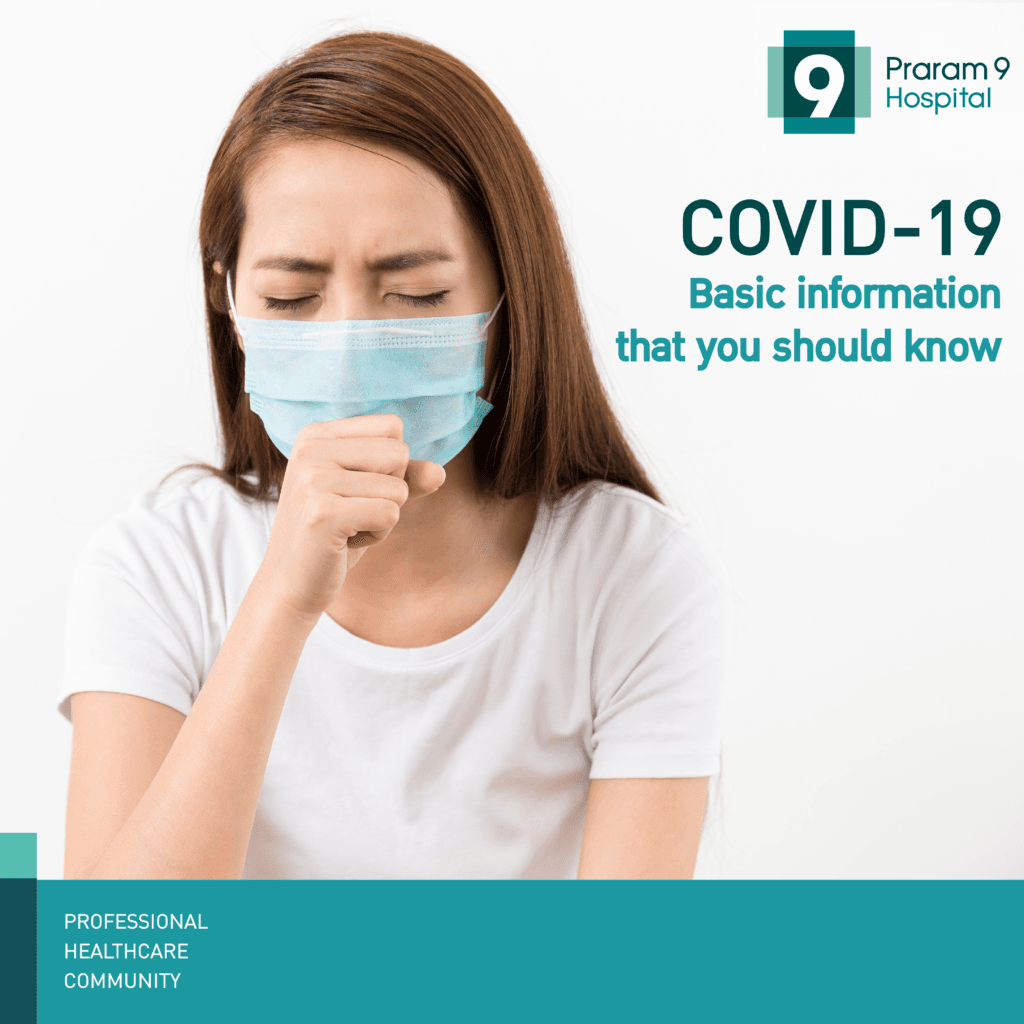Health Articles
Knowledge
Basic information about COVID-19 that you should know

Basic information about Coronavirus (COVID-19) that you should know
What is coronavirus?
The most recently discovered coronavirus disesase COVID-19 are a part of a large family of viruses which may cause illness in animals or humans such common cold to a more serious diseases like Middle East Respiratory Syndrome (MERS) and Severe Acute Respiratory Syndrome (SARS).
What is COVID-19?
Coronavirus COVID-19 were unknow before the outbreak began in Wuhan, China, in December 2019. It is the new infectious disease that was recently discovered.
What are the symptoms of COVID-19?
Most people, around 80% of all cases, recover from the disease without the need for special treatment. However, approximately 17% of COVID-19 cases, patients’ condition become worse and develops difficulty breathing. Elderly folk, as well as those with underlying medical problems such as high blood pressure, heart problems or diabetes have higher chance of becoming seriously ill. The most common symptoms of COVID-19 are fever, tiredness and dry cough. Some patients may experience aches and pains, nasal congestion, runny nose, sore throat and diarrhea. These symptoms are usually started off mild and gradually progress. For some people, they can become infected but don’t develop any symptoms and don’t fell unwell. People with fever, cough and difficulty breathing should seek medical attention.
How likely am I to catch COVID-19?
The risk depends on where you are in the world and whether there is a COVID-19 outbreak developing in that location. For most people in most locations the risk of catching COVID-19 is still low. However, the rivus is spreading rapidly to many places around the world. For people living in or traveling to or from these areas will have higher risk of catching COVID-19. Governments and health authorities are taking appropriate measures every time a new case of COVID-19 is identified. Please help by complying with any local restrictions on travel, movement or large gatherings. Cooperating with disease control efforts will reduce your risk of catching or spreading COVID-19 as well as indirectly helping other as a whole. Proven example such as China and some other countries has been shown that Covid-19 outbreaks can be contained and halted the viral transmission. Inevitably, new outbreaks can emerge rapidly. It’s important to be aware of the situation where you are or intend to go. The world health organization Ongoing research are being conducted by the World Health Organization which willl be shared publicly once it is ready.














